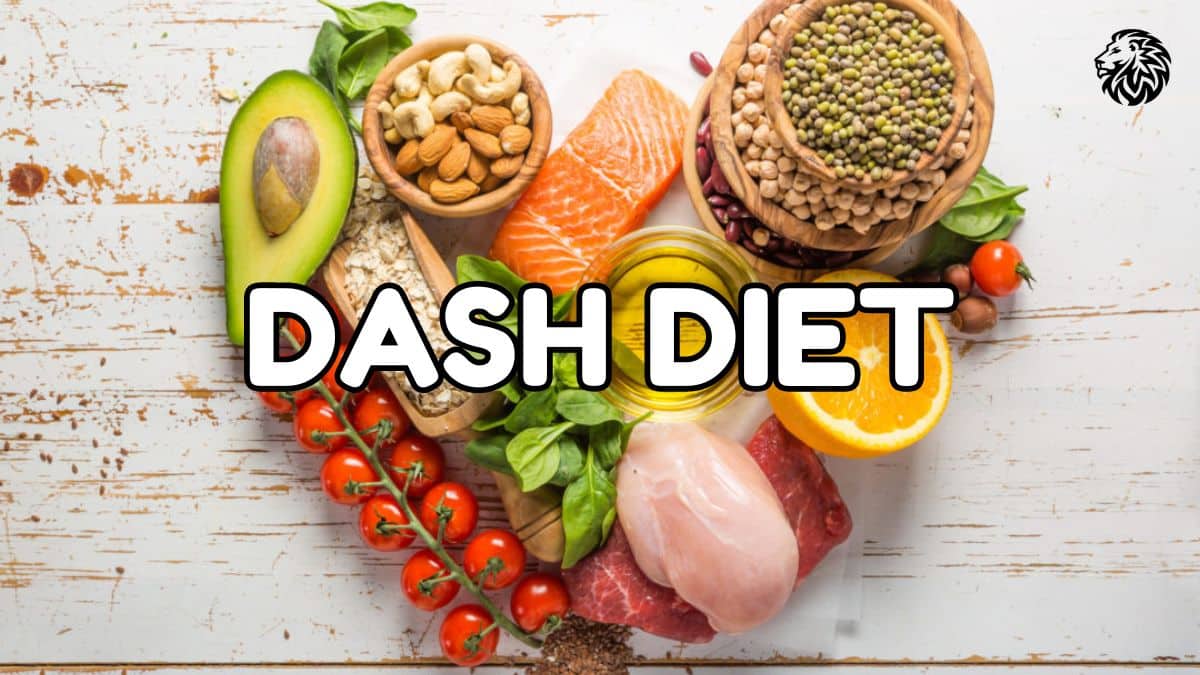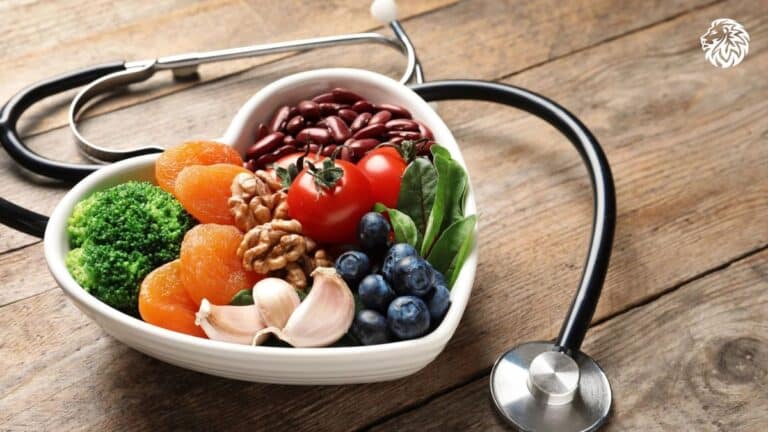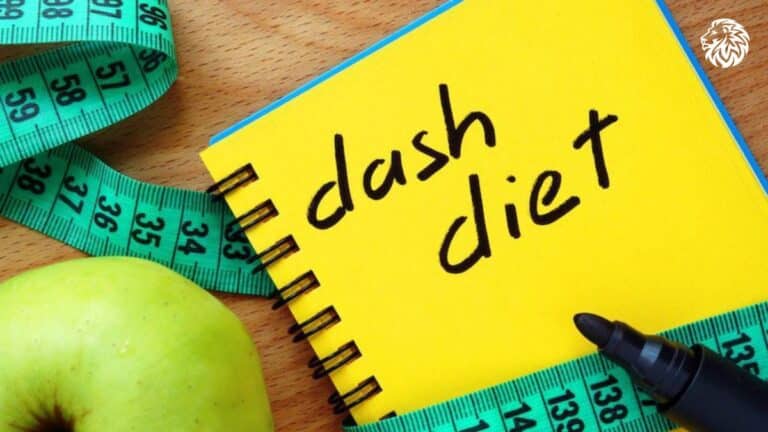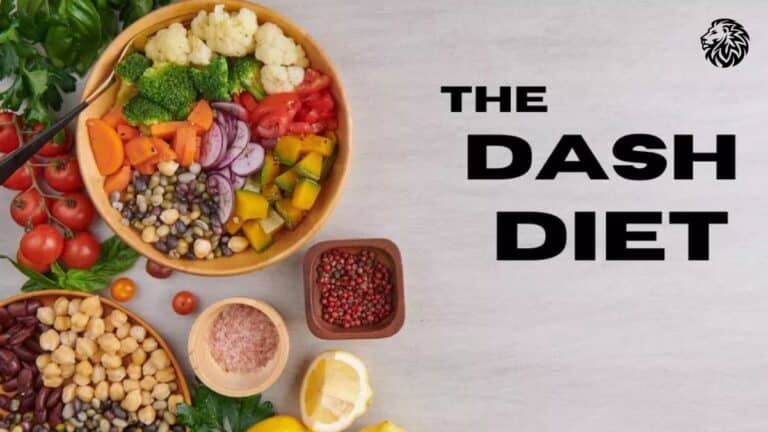The DASH diet (Dietary Approaches to Stop Hypertension) was designed to help reduce high blood pressure, but it has gained popularity as a healthy eating plan that promotes overall wellness. It’s based on a balance of nutrient-rich foods that support heart health and can be beneficial for weight management, reducing cholesterol, and improving blood pressure. But what exactly does this diet consist of? Let’s break it down to see what a typical day on the DASH diet might look like and how it benefits your body.
Core Principles of the DASH Diet
At the heart of the DASH diet is a focus on eating whole foods that are low in sodium and high in key nutrients such as potassium, calcium, and magnesium. These nutrients play a significant role in regulating blood pressure. The diet encourages a well-balanced plate, emphasizing fruits, vegetables, whole grains, lean proteins, and healthy fats.
Here’s a closer look at what the DASH diet consists of:
1. Fruits and Vegetables
Fruits and vegetables are the foundation of the DASH diet. They provide essential vitamins, minerals, fiber, and antioxidants that are important for overall health, particularly in managing blood pressure. Potassium, a key nutrient found in many fruits and vegetables, helps balance the effects of sodium and supports normal blood pressure levels.
Recommended Servings:
- Fruits: 4-5 servings per day
- Vegetables: 4-5 servings per day
A serving might include one medium fruit, half a cup of fresh or frozen vegetables, or a cup of raw leafy greens. Popular choices include bananas, oranges, berries, spinach, broccoli, and carrots.
2. Whole Grains
Whole grains provide fiber, energy, and important nutrients like magnesium and potassium. Foods like whole wheat bread, brown rice, oats, and quinoa are encouraged in the DASH diet because they help maintain steady blood sugar levels and support heart health.
Recommended Servings:
- Whole Grains: 6-8 servings per day
One serving could be a slice of whole wheat bread, half a cup of cooked rice or pasta, or one ounce of dry cereal.
3. Lean Proteins
Protein is vital for muscle maintenance and overall health, but the DASH diet focuses on lean sources of protein. This includes options like poultry, fish, beans, and legumes, which are rich in nutrients without being high in saturated fats. Red meat is allowed but should be limited due to its higher fat content.
Recommended Servings:
- Lean Meats, Poultry, and Fish: 2 or fewer servings per day
- Legumes, Nuts, and Seeds: 4-5 servings per week
Examples of a serving might be an ounce of cooked poultry, fish, or meat, or half a cup of cooked beans.
4. Dairy
Dairy products are a significant source of calcium, which is essential for bone health and blood pressure regulation. The DASH diet encourages low-fat or fat-free dairy options like milk, yogurt, and cheese. These provide the calcium and vitamin D needed without adding extra fat and calories.
Recommended Servings:
- Low-fat or Fat-free Dairy: 2-3 servings per day
A serving could include one cup of milk or yogurt or 1.5 ounces of cheese.
5. Nuts, Seeds, and Legumes
These foods are packed with heart-healthy fats, fiber, and protein. Although they are nutrient-dense, they are also calorie-dense, so portion control is key. Nuts, seeds, and legumes provide healthy fats that are beneficial for cholesterol levels and overall heart health.
Recommended Servings:
- Nuts, Seeds, and Legumes: 4-5 servings per week
One serving might be a third of a cup of nuts, two tablespoons of seeds, or half a cup of cooked legumes.
6. Healthy Fats and Oils
The DASH diet encourages the use of healthy fats, such as those found in olive oil, avocado, and fatty fish like salmon. These fats are beneficial for heart health and help reduce inflammation in the body. Saturated and trans fats, typically found in processed and fried foods, are discouraged because they can raise cholesterol levels and increase the risk of heart disease.
Recommended Servings:
- Fats and Oils: 2-3 servings per day
A serving could be one teaspoon of vegetable oil, one tablespoon of mayonnaise, or two tablespoons of salad dressing.
7. Limiting Sodium
One of the main goals of the DASH diet is to reduce sodium intake. Excessive sodium can raise blood pressure, so the diet emphasizes fresh, whole foods that are naturally low in sodium. Processed foods, canned goods, and restaurant meals often contain high levels of sodium, so they are limited or avoided.
There are two levels of sodium intake in the DASH diet:
- Standard DASH Diet: Limits sodium to 2,300 mg per day (about one teaspoon of salt)
- Lower-Sodium DASH Diet: Reduces sodium further to 1,500 mg per day
Reducing sodium can have a significant impact on blood pressure, especially for individuals with hypertension.
8. Sweets and Added Sugars
While the DASH diet doesn’t eliminate sweets, it encourages moderation. Desserts and foods with added sugars should be limited to prevent unnecessary calorie intake and to support heart health. The focus is on naturally sweet foods like fruits rather than processed snacks and sugary beverages.
Recommended Servings:
- Sweets and Added Sugars: 5 or fewer servings per week
A serving might be one tablespoon of sugar, jelly, or syrup, or half a cup of sorbet or gelatin.
Why Does the DASH Diet Work?
The DASH diet works because it focuses on nutrient-dense, whole foods while minimizing processed foods high in sodium and unhealthy fats. These dietary changes can lead to significant improvements in heart health, weight management, and blood pressure control. The combination of high potassium, calcium, magnesium, and fiber, along with lower sodium intake, creates a balanced approach to eating that supports long-term health.
Benefits of the DASH Diet
- Lowers Blood Pressure: The primary benefit of the DASH diet is its ability to lower high blood pressure. By focusing on foods rich in potassium and limiting sodium, it helps the body maintain a healthy balance.
- Supports Weight Loss: The diet’s emphasis on whole foods, lean proteins, and healthy fats can naturally lead to weight loss when followed consistently. It helps you stay full longer, which can reduce the urge to snack on unhealthy foods.
- Improves Cholesterol Levels: By reducing saturated and trans fats, the DASH diet helps lower LDL (bad) cholesterol, while the focus on healthy fats supports HDL (good) cholesterol.
- Reduces Risk of Heart Disease: The combination of improved cholesterol levels, lower blood pressure, and a healthy weight makes the DASH diet an effective tool for preventing heart disease and stroke.
How to Get Started on the DASH Diet
To start following the DASH diet, it’s best to ease into it. Gradually increase your servings of fruits and vegetables while reducing sodium intake over time. Begin by making small changes like swapping out refined grains for whole grains and choosing low-fat dairy products. Planning meals ahead of time can also help you stay on track.
Incorporating the DASH diet into your lifestyle doesn’t require drastic changes but rather a shift towards mindful eating and healthier food choices. Over time, these changes can make a big difference in your health and overall well-being.
Conclusion
The DASH diet consists of a well-balanced eating plan that promotes heart health, supports weight loss, and helps manage blood pressure. With its focus on whole foods, lean proteins, and healthy fats, it offers a sustainable approach to better nutrition. Whether you’re looking to improve your blood pressure or adopt a healthier lifestyle, the DASH diet provides a clear path to success.
References
- Mitry, P., et al. (2022). DASH diet and cardiovascular disease prevention: A systematic review and meta-analysis. Frontiers in Nutrition, 9, 775543. https://www.frontiersin.org/journals/nutrition/articles/10.3389/fnut.2022.775543/full
- National Heart, Lung, and Blood Institute. (n.d.). Following the DASH diet. https://www.nhlbi.nih.gov/education/dash/following-dash
- National Heart, Lung, and Blood Institute. (n.d.). The DASH eating plan. https://www.nhlbi.nih.gov/education/dash-eating-plan
- Epstein, B. J., & Palmer, B. F. (2013). Hypertension and the DASH diet: Balancing the equation. Current Hypertension Reports, 15(5), 465-472. https://link.springer.com/article/10.1007/s13668-013-0070-2
- Blumenthal, J. A., et al. (2012). DASH diet and cardiovascular risk factors. Current Hypertension Reports, 14(6), 383-391. https://link.springer.com/article/10.1007/s11906-012-0296-1
- Mayo Clinic. (2023). DASH diet: Tips for lifelong health. https://www.mayoclinic.org/healthy-lifestyle/nutrition-and-healthy-eating/in-depth/dash-diet/art-20048456
- Mayo Clinic. (2022). DASH diet: Healthy eating to lower your blood pressure. https://www.mayoclinic.org/healthy-lifestyle/nutrition-and-healthy-eating/in-depth/dash-diet/art-20047110
- WebMD. (2023). The DASH diet for high blood pressure. https://www.webmd.com/hypertension-high-blood-pressure/dash-diet
- Heart and Stroke Foundation of Canada. (n.d.). DASH diet: Healthy eating guide. https://www.heartandstroke.ca/healthy-living/healthy-eating/dash-diet







